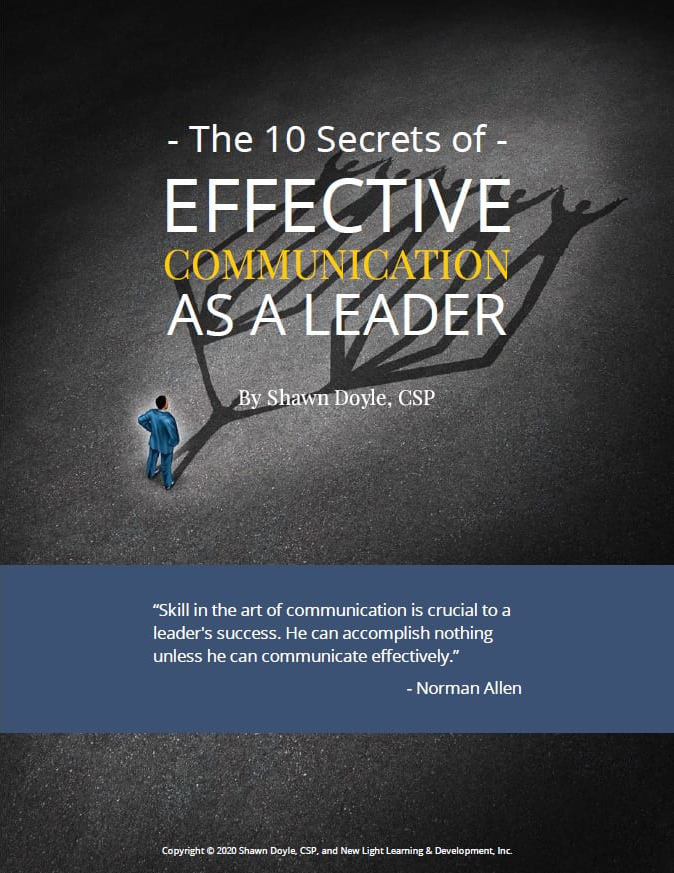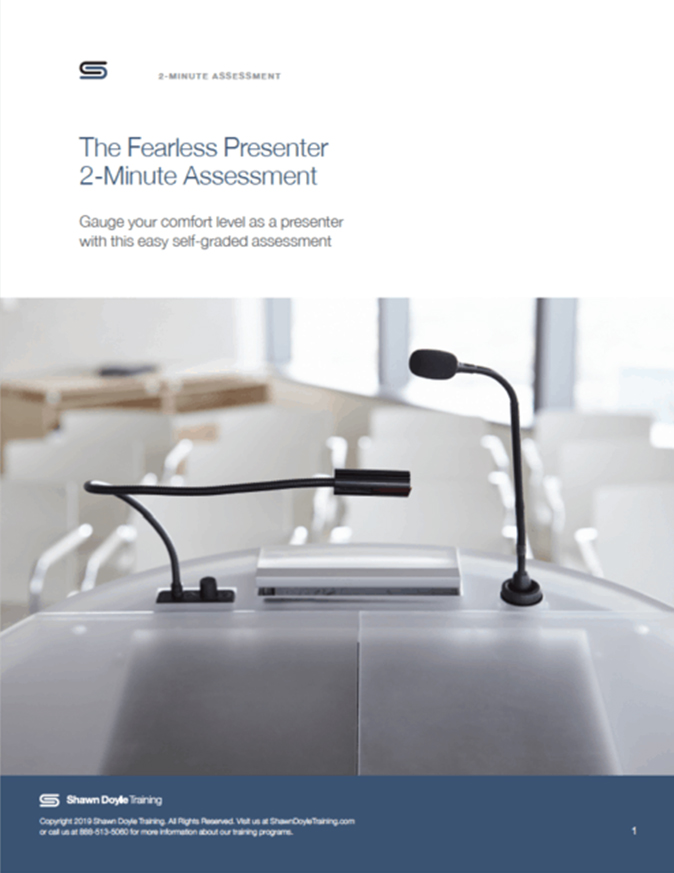Blog

Five Tips to Help You Master Presentations and Public Speaking
Does the idea of standing up in front of a group of people leave you feeling weak in the knees? Would you rather disappear completely than give a talk to a crowd? You’re not alone. Public speaking is one of the most common fears. In fact, about 75% of the population has at least some discomfort with it.
However, the ability to confidently talk to a group of people may mean big things for your career and your life. Whether you’re delivering a pitch to potential investors, leading a team meeting, or presenting research findings, how you communicate can make or break your message.
People want to hear confidence and feel positivity when listening to someone speak. Your words, tone, and body language are a huge part of not only keeping your audience interested, but also establishing your credibility.
In short, if you want to inspire trust and confidence in your thoughts and ideas, mastering public speaking is crucial.
The good news is that anyone can become a better public speaker. It’s a skill and not reserved for only a select few. You can do it! Here are five tips that will help you sharpen your speaking and presentation skills.
Know Your Audience

How you present or speak depends on whom you’re talking to and the situation. You’ll speak differently when meeting with a CEO than you would if explaining something to a researcher, for example.
If you know you’re going to be delivering a presentation, take the time to understand your audience’s preferences, interests, and knowledge level. Then tailor your content and delivery accordingly to better resonate with them.
Not only does this make your talk more interesting to the audience, but it will help calm your nerves as well. Being prepared helps you feel more in control, and that will relax you.
During the presentation itself, maintain this focus on your audience. Encourage interaction and participation when possible. People would rather be part of a discussion where they feel like they’re a part of the conversation, rather than sitting in a situation where they’re being lectured to.
Have a Structure

The order in which you present your ideas matters as much—if not more—than the quality of the content. One main goal of public speaking is to keep your audience engaged and eager to hear what you have to say next.
Start with a compelling introduction to grab attention, followed by the main body where you present your key points, and conclude with a memorable summary or call to action. If possible, consider structuring your talk as a narrative or a story.
A great story has a beginning, middle, and an end. It takes people on a journey and causes them to become invested in what happens next. If you can do that during your presentation, the audience will be engaged, which will bolster your confidence. When you can tell that people are interested, public speaking becomes easier.
Rehearse Your Presentation

If you’re delivering a talk or presentation, familiarize yourself with the content and flow. You don’t have to memorize every word, but go through your presentation multiple times to make sure you’re comfortable with it.
Consider giving your talk in front of a mirror, so you can observe your body language as you speak. Recording yourself (either in audio or video) may also be helpful. The more you practice, the more confident and polished your delivery will be.
When you know your talk backward and forward, inside and out, not only will it come easier to you, but you’ll feel less nervous, too.
Be Aware of Body Language

How you deliver your presentation is incredibly important. Work to maintain eye contact with your audience. Perhaps pick a person or a spot in the room to use as a visual focus. If you start to look down or away, return your gaze to that spot. Maintaining eye contact conveys confidence and trust.
Avoid distracting mannerisms, gestures, or facial expressions. It might be a good idea to have a trusted friend or colleague watch your presentation a few times before you give your talk to a larger group. That person might be able to pick up on any distracting quirks or nervous twitches that detract from the power of your presentation.
Calm Your Nerves

It’s natural to feel nervous before speaking in public, but don’t let fear hold you back. Know that almost everyone feels nervous sometimes, but you can totally overcome this anxiety.
Practice relaxation techniques, such as deep breathing or visualization, to calm your nerves before speaking. If you’re filled with nervous energy, try to channel it into enthusiasm and passion for your topic.
Do you want to deliver memorable presentations that educate, inspire, and move audiences to action? Are you looking to master public speaking once and for all? Presentation Power is for you! This exclusive webinar will help you perfect the art of memorable, high-impact speaking. Register for free today at: https://shawndoyletraining.com/presentation-power/.







